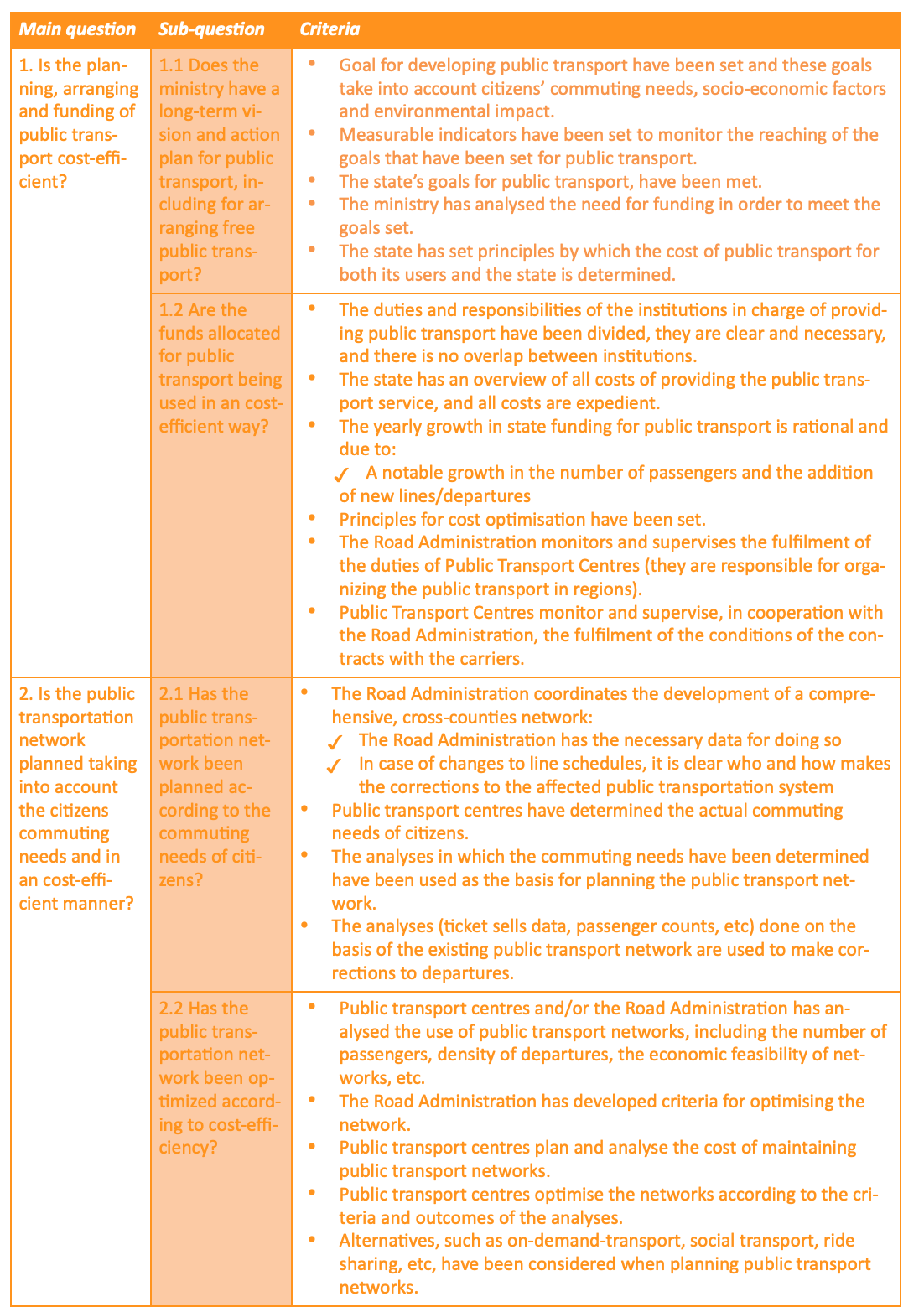MOOC: Auditing environmental impacts of infrastructure
3.5. Sustainability of transportation
Auditors can look at a variety of topics ranging from which fuels are used to how optimal public transport routes are when auditing the sustainability of transportation.
Due to both the ambiguity of what exactly sustainable transport is and the growing prominence of transportation when talking about sustainability, in 2020, the INTOSAI WGEA members agreed to approve the project plan ‘Auditing Sustainable Transport: Guidance for Supreme Audit Institutions’. The publication aims to provide a guidance document for SAIs for auditing the sustainability of transport. The paper will provide:
- background and scope on sustainable transport and description of the current trends and recent developments in the area;
- understanding of the governance tools, treaties and policies concerning sustainable transport;
- guidance for auditing sustainable transport; and
- case studies from SAIs around the world.
 | Reading suggestion!The INTOSAI WGEA publication ‘Auditing Sustainable Transport: Guidance for Supreme Audit Institutions’ is planned to be officially approved in the end of 2022. Follow the INTOSAI WGEA webpage for more information on the publication. |
The European Union Council of Ministers of Transport defines a sustainable transportation system as one which:
- Allows the basic access and development needs of individuals, companies and the society to be met safely and in a manner consistent with human and ecosystem health and promotes equity within and between successive generations;
- Is affordable, operates fairly and efficiently, offers a choice of transport mode and supports a competitive economy as well as balanced regional development; and
- Limits emissions and waste within the planet’s ability to absorb them, uses renewable resources at or below their rates of generation and uses non-renewable resources at or below the rates of development of renewable substitutes, while minimising the impact on the use of land and the generation of noise.
 | Reading suggestion!Read more about sustainable transport from the European Commission webpage. |
Sustainability aspects covered by questions |
Questions that can be asked when considering the sustainability of transport infrastructure |
| Economic & social | How is public transport organised and financed? What is the cost of public transport for citizens? Is public transport affordable for citizens? What taxes are in place for personal vehicles? What road taxes are in place? How advanced is the public transport network? Is it designed based on the needs of the inhabitants? |
| Economic & environmental | What fuels are used in public transport vehicles? Which public transport modes are favoured? |
| Environmental & social | Is the use of public transport promoted over personal cars? What externalities (impacts on human health and the environment) are prominent in transport? Is there a plan in place for reducing the externalities? Is cycling promoted as a transportation mode? What kind of alternative transport modes are used? |
| Environmental, social & economic | What subsidies are available to promote sustainable fuels in personal vehicles? Is the public transport network and system optimal? |
Audit example:
‘Public Transport’ (National Audit Office of Estonia, 2021)
The National Audit Office found that the bus network may not meet the needs of all people as actual mobility needs have been under-researched. The network of county bus lines has so far been developed based on the needs of current public transport users. The National Audit Office calculated that in 2019, the average cost per passenger for one county bus line was 6.31 euros. At the same time, there were bus lines where this cost was over 100 euros, which is covered from the state budget. The state has not referred public transport operators to look for alternatives to regular line services, which in cooperation with modern information technology options would help organise public transport more flexibly and economically. Presented below are the main questions and criteria used in the audit.


